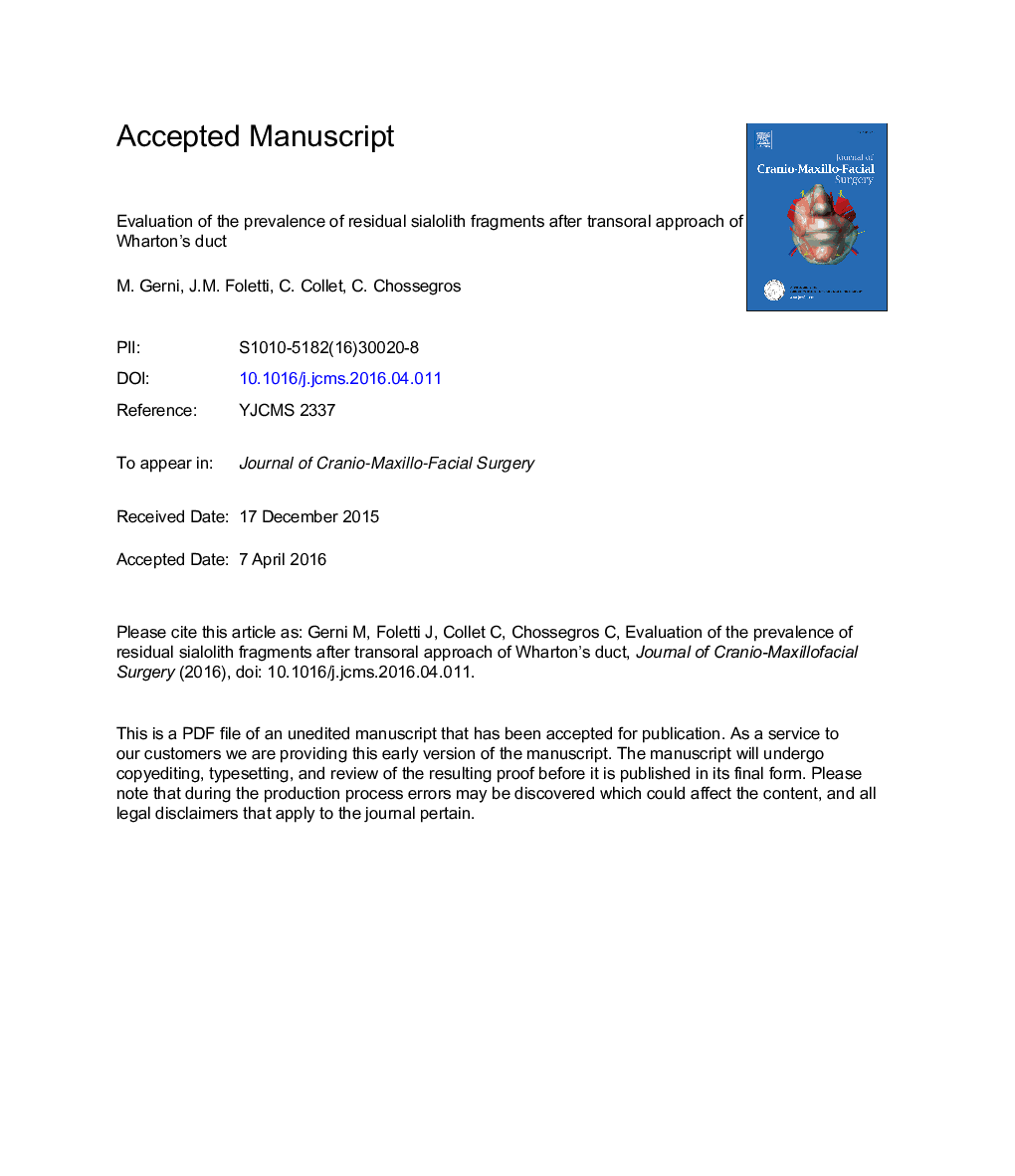| Article ID | Journal | Published Year | Pages | File Type |
|---|---|---|---|---|
| 5640269 | Journal of Cranio-Maxillofacial Surgery | 2017 | 15 Pages |
Abstract
Transoral submandibular duct sialolith removal is a simple technique with very few complications. Nevertheless, following this procedure, we have observed long-term calculus recurrence in a number of patients. We therefore elected to evaluate these cases. This was a monocentric prospective study performed between November 2013 and June 2014. All patients received surgery for submandibular gland lithiasis by intraoral removal of submandibular duct calculi. Between the day following the procedure and 3 months postsurgery, these patients systematically underwent an ultrasound examination of the submandibular gland. The study comprised 15 males and 15 females aged between 19 and 87 years, of which one male presented with bilateral calculi (n = 31). Asymptomatic sialolith fragments were found in 16% of patients. A statistically significant risk (p < 0.05) of residual sialolith was demonstrated in cases in which the calculus or multiple calculi fragmented perioperatively. Our aim was to remove the sialolith as non-traumatically as possible and to perform sialendoscopy at the end of the procedure to check the patency of the anterior ductal segment and to ensure that no residual calculus fragments were present despite the loss of fluid tightness subsequent to the opening of the hilum.
Related Topics
Health Sciences
Medicine and Dentistry
Dentistry, Oral Surgery and Medicine
Authors
M. Gerni, J.M. Foletti, C. Collet, C. Chossegros,
